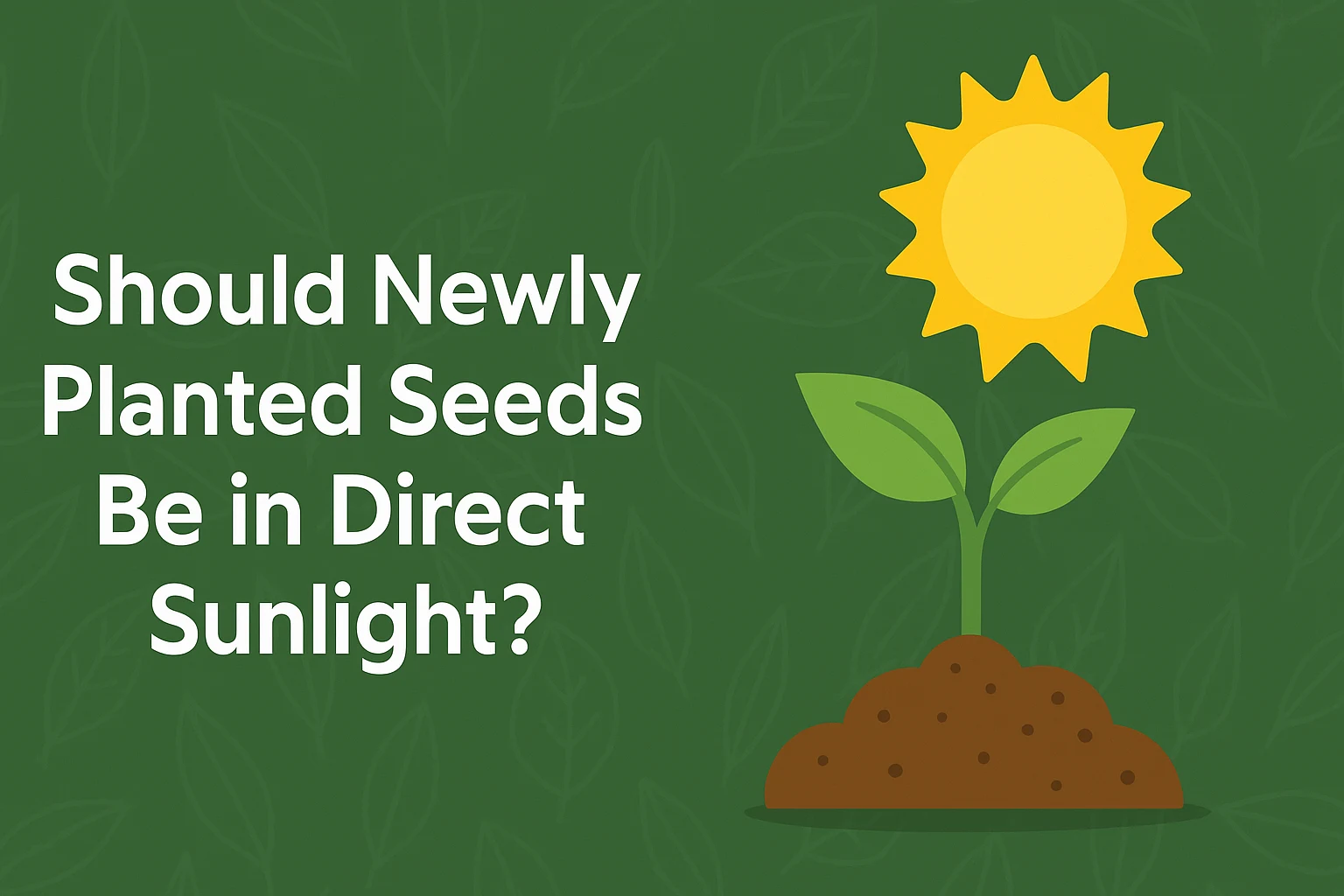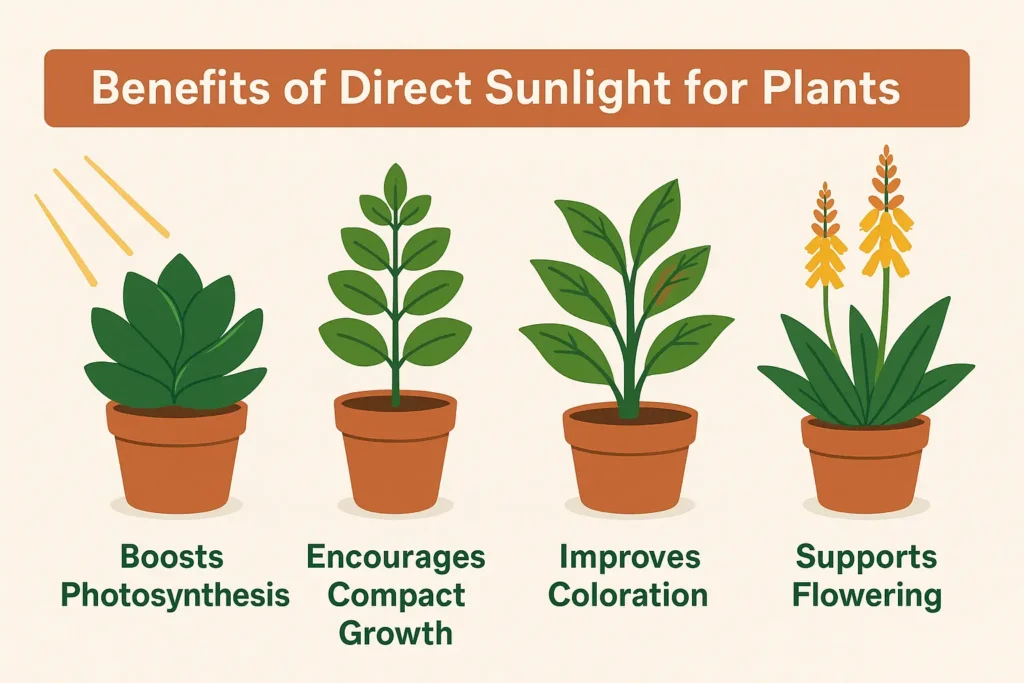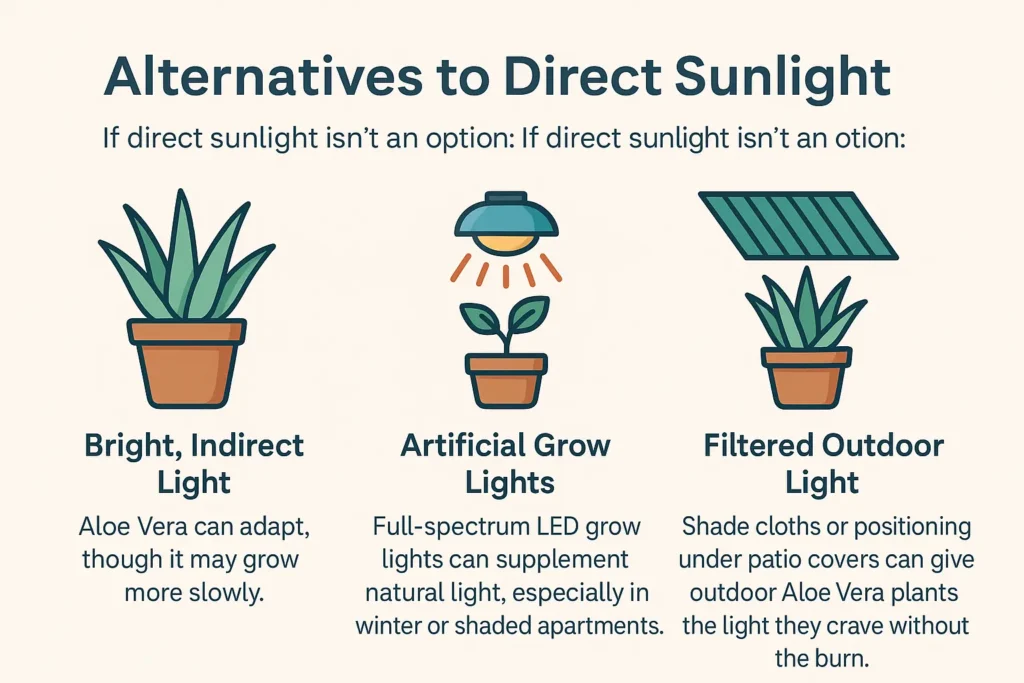Should Newly Planted Seeds Be in Direct Sunlight?

When starting a garden or even a few pots of herbs, one of the most common questions is: Should newly planted seeds be in direct sunlight? It seems straightforward, but the answer depends on what you’re growing and how you’re growing it. The right lighting can make or break your seed-starting success.
In this guide, we’ll break down how sunlight affects seed germination, when direct sunlight helps, and when it can hurt your delicate seedlings. If you’re working on building a thriving indoor plant collection, you might also want to explore plants for direct sunlight to better understand which species love the sun once they mature.
Introduction
Before we get into whether newly planted seeds should be in direct sunlight, let’s cover what happens when a seed germinates. Seeds need three primary conditions to sprout: moisture, warmth, and oxygen. Light is not always required for germination, though it is essential as soon as seedlings emerge.
The seed’s hard shell absorbs moisture, triggering enzymes that break down stored food inside. Heat speeds up this process, but light can be irrelevant—or even harmful—at this early stage for certain plant species. So, when asking “Should newly planted seeds be in direct sunlight?”, we need to distinguish between germination and post-sprouting care.
How Different Plants React to Direct Sunlight?
Not all seeds are created equal. Some crave sunlight as soon as they break the soil, while others prefer gentler conditions.
Tomatoes & Peppers
Tomatoes and peppers, beloved staples in many gardens, benefit from bright light immediately after germination. However, for the first few days, it’s safer to offer bright, indirect light rather than harsh direct sunlight. These seedlings are tender and can dry out quickly if exposed to strong midday sun too soon.
Lettuce & Spinach
Cool-season crops like lettuce and spinach germinate just fine in cooler temperatures and indirect light. Direct sunlight, especially in warmer climates, can cause their tiny seedlings to wilt before they establish a root system.
Herbs (Basil, Parsley)
Herbs like basil need direct sunlight after sprouting to avoid becoming leggy and weak. However, during the germination stage, basil seeds prefer warmth and moist soil more than intense sunlight. Parsley seeds, in contrast, are slow to germinate and benefit from a bright but protected environment initially.
Flowers (Marigolds, Zinnias)
Many flowering annuals like marigolds and zinnias are sun-lovers once established, but seedlings prefer a gradual introduction to direct sunlight. A few hours of morning sun is ideal to start, followed by more exposure as they grow.
If you’re unsure whether your specific plant thrives in direct sunlight as seedlings, refer to this comprehensive guide on plants for direct sunlight.
Benefits of Direct Sunlight for Seedlings
While newly planted seeds may not require direct sunlight, once those first green shoots appear, sunlight becomes critical. Here’s why:
Better flowering & fruiting later on: For plants like tomatoes and peppers, strong early sunlight exposure lays the foundation for productive plants.
Strong stems & healthy leaves: Direct sunlight encourages sturdy growth, reducing the risk of leggy, weak plants.
Photosynthesis efficiency: Natural sunlight provides the full spectrum of light wavelengths, giving seedlings the energy they need.
Alternatives to Direct Sunlight for Seedlings
If direct sunlight is too harsh, especially in summer, consider these alternatives:
- Sheer curtains: Diffuse sunlight coming through windows.
- Shade cloths outdoors: Provide filtered sunlight for delicate seedlings.
- East-facing windows: Offer gentle morning sun without the harsh afternoon heat.
- Grow lights with adjustable intensity: Let you control the light level precisely.
This controlled approach ensures that your seedlings get the light they need without the risk of damage.
Seasonal and Location-Based Adjustments
The right answer to “Should newly planted seeds be in direct sunlight?” can change with seasons:
Indoor gardening: Sunlight through glass can intensify heat, so monitor seedlings closely.lant’s environment ensures strawberries remain healthy and productive year-round.d.
Spring & Fall: Mild sunlight is generally safe for young seedlings.
Summer: Midday sun can be brutal; limit direct exposure to mornings.
Practical Tips to Manage Light Exposure
Managing sunlight exposure doesn’t have to be complicated. Here’s how to get it right:
- Observe the Plant: Yellowing leaves or leggy growth signal not enough light; scorched leaves indicate too much.
- Use Simple Tools: A light meter app can help you measure light intensity.
- Mulch and Watering: Mulching helps retain soil moisture and regulates root temperatures.
- Reposition Plants: Move container-grown strawberries as needed to catch the morning sun while avoiding harsh afternoon rays.
Still asking yourself, should strawberry plants be in direct sunlight? Remember, direct sunlight is powerful. Control is everything.
Conclusion
To wrap up: should newly planted seeds be in direct sunlight? In most cases, no—not immediately. Seeds need moisture, warmth, and oxygen more than direct sunlight during germination. Once seedlings emerge, introducing direct sunlight gradually is beneficial, but too much too soon can harm tender plants.
Monitor your plants closely, adjust their light exposure based on species and environment, and use protective measures like filtered light or shade when needed. By paying attention to these details, you’ll give your seedlings the best possible start.
Check out our plants for direct sunlight guide. It’s packed with practical tips for sun-loving plants beyond basil.
Explore More Guides and Calculators
At PlantCalculators, we’re all about making plant care easier. Dive into our other handy guides and tools:
- Mulch Calculator: Find out how much light your specific plant needs.
- Watering Calculator: Personalized watering guides based on your environment.
- Soil Calculator: Get the dirt on soil mixes and feeding routines.
Visit our Houseplants section for a full library of resources designed to help your plants thrive.
Recommended Resource for Further Reading
For expert-backed, science-based houseplant care tips, we highly recommend this comprehensive guide from the University of Illinois Extension. It’s a fantastic resource for learning about indoor plant care, common issues, and best practices.


